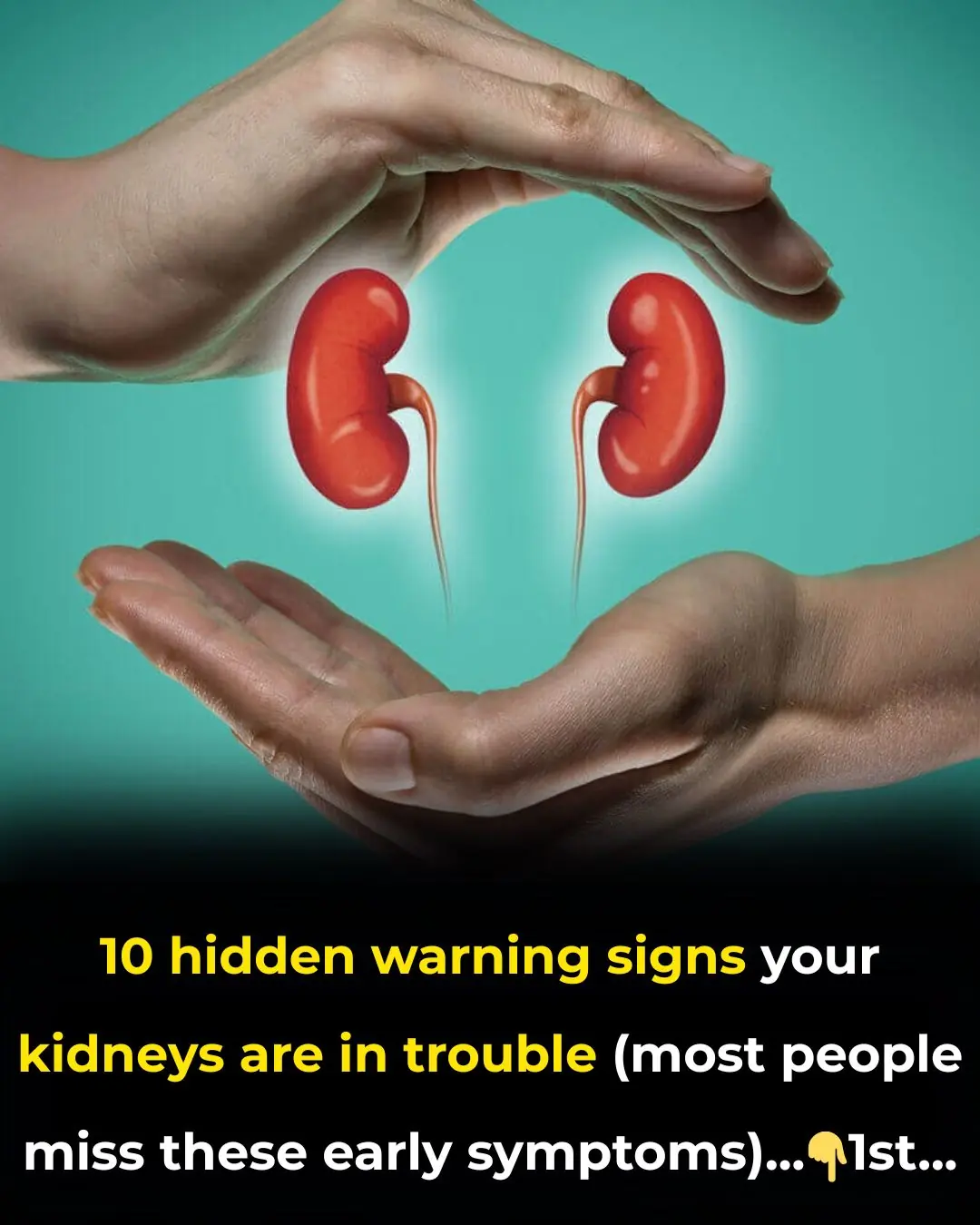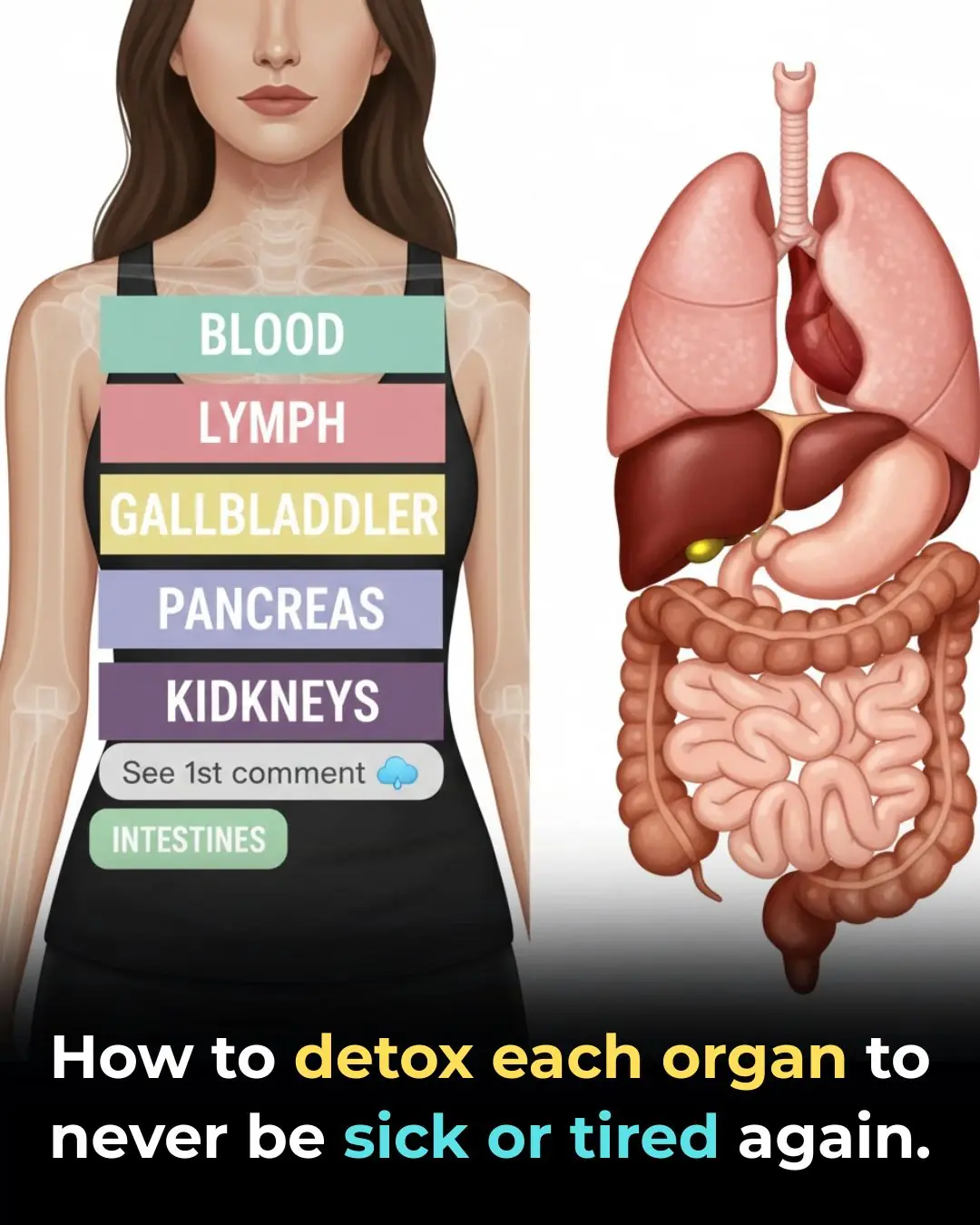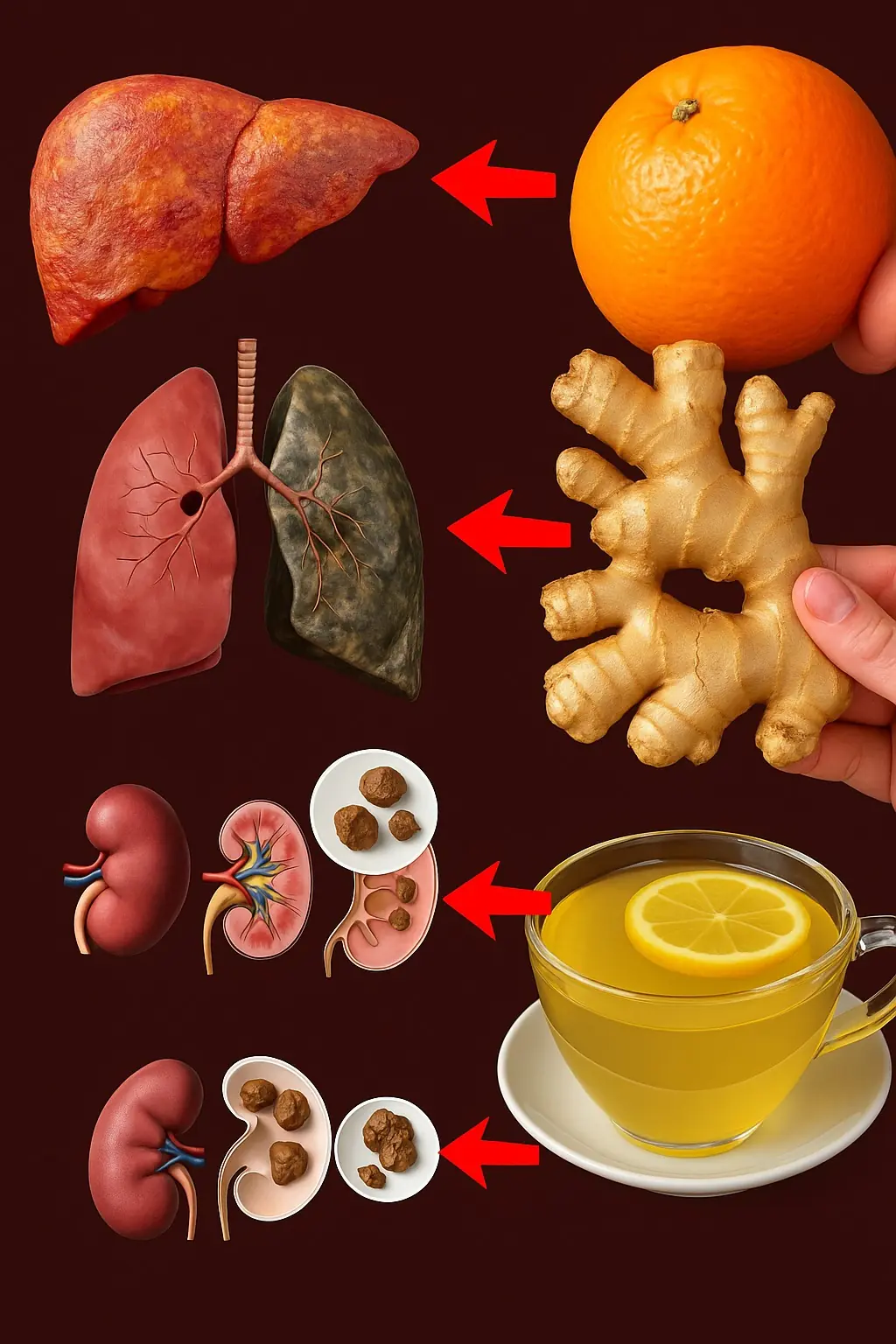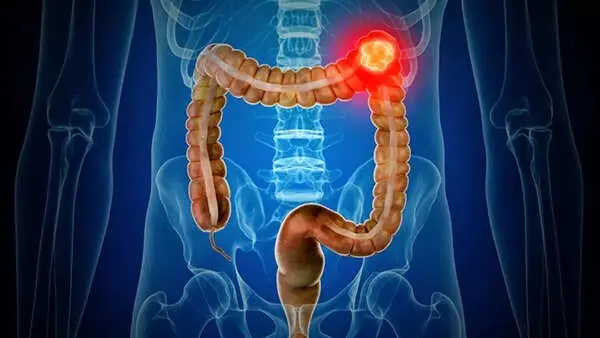
10 Subtle Symptoms of Clogged Arteries You Shouldn’t Ignore
Heart disease continues to be one of the most significant health challenges across the globe, and clogged arteries play a major role in increasing those risks. Your arteries function like essential highways, transporting oxygen-rich blood and nutrients to every part of your body. When plaque begins to build up along these pathways, the space for blood flow becomes narrower. Over time, this reduced circulation can trigger serious health emergencies, including heart attacks or strokes.
One of the most concerning aspects is that clogged arteries often worsen silently for years. Early symptoms can be subtle—easy to overlook or blame on stress, aging, or lifestyle habits. However, recognizing these warning signs early gives you the chance to protect your long-term health, make better lifestyle choices, and potentially prevent life-threatening complications later on. Here are ten symptoms that should never be ignored.
1. Chest Pain or Tightness
Chest pain is one of the most common indicators of blocked arteries. The discomfort may feel like pressure, squeezing, heaviness, or burning and may radiate into your neck, jaw, shoulder, or arm. Many people confuse this sensation with indigestion, muscle strain, or emotional stress, but it can often reflect the heart struggling to receive enough oxygen-rich blood.
Some episodes last only a few minutes and ease with rest, while others persist or intensify over time. Whether mild or severe, ignoring chest pain puts you at significant risk.
Tip: Seek medical attention immediately if chest pain is new, worsening, or accompanied by shortness of breath.
2. Unusual Fatigue
Everyone experiences tiredness, but fatigue linked to poor circulation feels noticeably different. Even simple activities—such as walking up stairs or completing routine chores—may leave you unexpectedly exhausted. When your heart and muscles don't receive adequate oxygen, they cannot perform efficiently, creating a level of fatigue that sleep or caffeine won’t fix.
This type of exhaustion can gradually interfere with daily life, making ordinary tasks feel burdensome.
Tip: Make note of when fatigue appears, especially during physical activity.
3. Leg Pain or Cramping During Activity
Arteries in the legs can also become narrowed due to plaque buildup. This can lead to cramping, heaviness, or pain when walking or exercising, a condition often referred to as peripheral artery disease (PAD). The discomfort typically improves when you rest but returns once you begin moving again.
Ignoring these symptoms can allow circulation problems to worsen over time.
Tip: Leg pain that consistently appears during activity and disappears at rest is an important warning sign.
4. Shortness of Breath
Struggling to catch your breath—even during mild physical activity or while resting—can point to restricted blood flow. When the heart is forced to work harder to circulate oxygen, the body may respond with breathlessness. Some people describe the feeling as tightness, while others experience a constant sensation of not getting enough air.
This symptom is often dismissed as being out of shape, but when related to circulation, it should be taken seriously.
Tip: If shortness of breath begins suddenly or worsens rapidly, seek medical assistance.
5. Numbness or Weakness in the Limbs
When arteries that lead to the brain or limbs become narrowed, the reduced circulation can cause sudden numbness, tingling, or weakness. Often, one side of the body is affected more noticeably. These sensations may appear and disappear quickly, making them easy to downplay.
However, such symptoms may signal that the body is not receiving enough blood flow where it’s needed most.
Tip: Treat sudden numbness or weakness as urgent—especially if accompanied by speech or vision changes.
6. Cold Hands and Feet
Poor circulation can leave your hands and feet feeling unusually cold, even in warm environments. Reduced blood flow means your extremities do not receive enough warm, oxygenated blood. Skin may appear pale or slightly bluish in color.
Although chilly extremities can result from many causes, consistently cold hands or feet may indicate a deeper cardiovascular issue.
Tip: Notice if one hand or foot is colder than the other, as uneven circulation can be significant.
7. Dizziness or Lightheadedness
When blood flow to the brain is reduced, dizziness or lightheadedness may follow. Some people also experience trouble balancing or moments where they feel faint. While dehydration or standing up too quickly can cause similar symptoms, circulation problems may be the underlying reason.
If these sensations occur repeatedly, your brain may not be receiving the oxygen it needs.
Tip: Recurrent dizziness should be evaluated by a medical professional.
8. Trouble Sleeping or Sleep Apnea
Clogged arteries can contribute to sleep issues, particularly sleep apnea. Restricted blood flow may lower oxygen levels during rest, causing frequent waking, loud snoring, or morning fatigue. Many people do not realize that sleep disruptions can reflect cardiovascular stress.
Left unaddressed, sleep apnea can worsen circulation and increase strain on the heart.
Tip: If snoring is persistent or you wake feeling unrefreshed, a medical evaluation may be helpful.
9. Jaw or Neck Pain
Circulation problems don’t always manifest as chest discomfort. Pain in the jaw, throat, or neck can also occur when the heart is under stress. Some people assume the discomfort is dental or muscular, but the heart can sometimes refer pain to these areas.
Women, in particular, are more likely to experience non-traditional symptoms such as jaw or back pain instead of classic chest pressure.
Tip: Jaw discomfort paired with fatigue or chest tightness should not be ignored.
10. Irregular Heartbeat
An irregular heartbeat—often felt as fluttering, pounding, or skipped beats—may occur when plaque restricts blood flow and disrupts normal heart rhythms. While some irregularities are harmless, others may signal underlying circulation issues.
Tracking these sensations provides valuable clues about your cardiovascular health.
Tip: Monitor when palpitations occur and discuss patterns with a healthcare provider.
Taking Care of Your Arteries Before Problems Begin
Clogged arteries develop gradually, but the good news is that you have time to take action. Many warning signs overlap with other conditions, making them easy to dismiss. Staying proactive—through regular checkups, healthy eating, stress management, and consistent movement—can significantly reduce the progression of plaque buildup.
Small adjustments in your lifestyle can create long-lasting improvements in your heart health. By paying attention to your body and responding early, you give yourself a better chance of avoiding serious complications and enjoying a longer, healthier life.
Disclaimer
This information is for educational purposes only and is not a substitute for professional medical advice, diagnosis, or treatment. Always consult a qualified healthcare provider with questions about your health or medications. Never delay seeking professional help because of something you have read here.
News in the same category


Tomato Extract: Better And Safer Blood Thinner Than Aspirin

10 warning signs your kidneys are failing (symptoms most people don’t know)

Blurred Vision in One Eye and a Headache

How To Detox Each Organ To Reset Your System

Natural Detox: Simple Daily Habits to Support Your Kidneys, Liver & Lungs

Apple Cider Vinegar: A Simple, Natural Way to Support Your Daily Wellness

7 powerful fruits that cleanse your kidneys naturally

What Can Your Urine Tell You about Your Health

Pour hot water over an apple and the chemicals will become clearly visible – the best way to check if an apple is toxic

Doritos Goes Dye-Free: PepsiCo Shifts to Natural Colors

Everyday symptoms that keep appearing in people with bowel cancer

The Shocking Truth About Blood Clots and Natural Treatments That Actually Work

Hidden signs of parasites in your body and how to flush them out naturally

Proven Health Benefits of Eating Eggs Based on Evidence

Nanobots could be disease-fighting machines inside the body, offering a path to eternal life

Surgeon who watched online videos on amputation charged after removing his own legs

5 Estrogen-Rich Foods Women Should Eat for Hormonal Balance & Radiant Skin
News Post

This ancient seed oil may help calm knee pain better than Tylenol, study suggests

This vitamin deficiency could be raising your colorectal cancer risk — and half the world is low

Tomato Extract: Better And Safer Blood Thinner Than Aspirin

10 warning signs your kidneys are failing (symptoms most people don’t know)

Yarrow: A Timeless Herbal Ally with Amazing Health Benefits

The Digestive Benefits of Mimosa Pudica: A Natural Gut Cleanser

The Stone Breaker Plant: Nature’s Remedy for Kidney Stones

Secret Tips for Growing Healthy and Productive Clove Plants

The Remarkable Benefits and Uses of Mullein Leaves

Meghan Markle speaks out after Balenciaga designer revealed she invited herself to Paris fashion week

Serial Brooklyn dine-and-dash influencer caught avoiding the bill in dramatic video as local eateries wise up to scheme

A-list actress looks completely unrecognizable in new ‘Hunger Games’ trailer

Joey and Jesse Buss fired by Lakers after $10 billion sale as family feud with Jeanie explodes

I’M A CELEB HAD A SPECIAL ‘SMOKO RULE’ THAT ONLY APPLIED TO ONE LEGENDARY STAR

Tips to clean shiny enamel at home without spending a penny

WHERE TO WATCH JOEY’S FRIENDS SPINOFF AS LOST EPISODES RELEASED AFTER 19 YEARS

PARIS JACKSON MAKES SHOCKING CLAIM ABOUT $10,000,000 WORTH OF DAD MICHAEL'S WILL

How to help you travel thousands of miles without getting motion sickness
